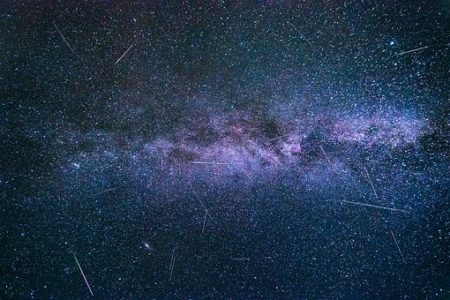What is the Perseid meteor shower?
Keep a look out for the annual meteor display that is hitting the sky.
The Perseid meteor shower is one of amateur astronomy’s most awe-inspiring events. Every summer, from the middle of July to the end of August, hundreds of shooting stars light up the sky in a spectacular fiery display.
This occurs when Earth passes through the tail of comet Swift-Tuttle, causing minute particles of remnant dust to rain down on our atmosphere.
Regardless of the fact that most of these particles are barely larger than a micron or two across, the speeds and forces involved cause them to burn up with such force, the light show can be seen across much of the northern hemisphere, leaving contrails miles long or, if you’re lucky, fireballs exploding like fireworks from space.

A meteor passing over the Very Large Telescope (VTL) in Chile during the Perseid meteor shower in 2010
The peak time to see this year’s Perseid meteor shower was this week, and many have been able to capture these meteors hurtling through the air despite particularly bright moonlight.
If you are lucky enough to spot the Perseid meteor shower, send us your comments and photos on Facebook and Twitter.
For more science and technology articles, pick up the latest copy of How It Works from all good retailers or from our website now. If you have a tablet or smartphone, you can also download the digital version onto your iOS or Android device. To make sure you never miss an issue of How It Works magazine, subscribe today!
Plus, take a look at:





